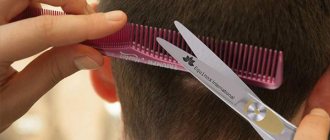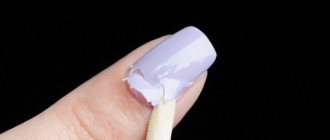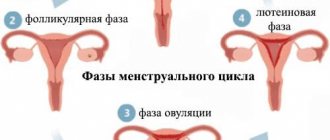The issue of pacifiers has always been relevant. It is often difficult for inexperienced parents to understand it, because opinions on the need for this accessory differ. Some people believe that such products will harm the baby, while others are sure that if used wisely, the pacifier will not affect the baby in any way, but will only help him quickly calm down. A pacifier is necessary for all children - both artificial babies and those who are breastfed; thanks to it, babies go to bed faster.
Sucking reflex
The main argument of supporters of the use of such products is the need to satisfy the sucking reflex in babies, which appears even at the stage of intrauterine development. While in the mother's belly, the baby sucks its thumb, thus preparing for breastfeeding.
When you run your finger, pacifier or pacifier over your baby's lips, you will see that he instinctively extends them, tries to grasp the object with them and begins to suck.
After birth, even a well-fed baby will continue to smack his lips, gradually calming down and falling asleep. You should not be afraid of this behavior, since this is also one of the manifestations of the sucking reflex.
The sucking process is extremely important for the correct formation of the facial bones and bite of the infant . When a baby on breastfeeding eats, his lower jaw strengthens. In artificial babies, especially if there is a large hole in the nipple of the bottle, such stimulation does not occur. But both children sometimes need to be given a pacifier so that the jaws work and the bite is formed correctly.
As a rule, the sucking reflex is completely satisfied in children on breastfeeding; in artificially fed children, the process of sucking a bottle is often not enough to cover the physiological need.
When is it time to give up the pacifier?
If your baby strongly associates the pacifier with sleep, and he calls you at night to give it to him again, it’s time to give up this habit.
Many pediatricians agree that the most appropriate age for this is 1-1.5 years. Unfortunately, there are no pleasant, painless ways to give up the pacifier. But keep in mind that giving up the usual pacifier is much easier for children than parents usually think. No matter how strong the habit is, giving it up will take no more than 3 days.
Refusal from the pacifier - what should you do?
- Tell your baby it's time to give up the pacifier
- Give your child a few days to get used to this idea and choose a day to start
- If the baby is very worried, calm him down, stroke him, pat him on the back.
- Be prepared for some tough nights and days.
- Do everything possible to strengthen your child’s attachment to his favorite toy (link to article about pets). Say: “Now is not the time for a pacifier, but Teddy Bear is here, he can hug you.” This both distracts him from the pacifier and gives him a safe replacement. Better yet, give him a new favorite toy. This novelty may distract him even more. You can even take your child to the store so he can choose a new friend for himself.
- If your child is older, you can read him a book about giving up pacifiers (link to book)
- Some pediatricians recommend cutting or piercing the tip of the pacifier, then the child will no longer like it.
- Whatever you do, if you take away the pacifier once, don't buy a new one after an hour of crying!
If you're not ready to give up your pacifier just yet.
Many parents do not want to wean their child off the pacifier, preferring to wait to see if he will give it up on his own. If you are not ready yet, we would recommend
- do not give a pacifier during daytime naps and preparation for bedtime
- Don't let your baby walk around with a pacifier all day
Some babies who lose their pacifier begin to suck their thumb. But this is the exception rather than the rule.
Thus, the pacifier itself is not a problem. But most often it is used as an aid when falling asleep. If your child wakes up at night, and in order to fall asleep, he needs a pacifier, the relationship is obvious - it is the pacifier that is the cause of the baby’s sleep disturbances.
When is a pacifier needed?
By satisfying the baby's sucking reflex, you can not only properly develop the baby's jaw and satiate him. The sucking process has a pronounced sedative effect. Newborns immediately stop crying when their mouth is occupied with a pacifier, and begin to actively suck it.
Some babies cannot sleep without their mother's breast or formula in their mouth. At such moments, the child can be given a pacifier.
A pacifier is, of course, an indispensable assistant for mothers, with which you can quickly calm your newborn. If a breastfeeding baby stops crying after receiving the mother’s breast, then a pacifier comes to the aid of artificial breastfeeding parents.
Neonatologists and pediatricians are not against the use of pacifiers, but recommend giving them to newborns only to help them fall asleep better or calm down when they are capricious. Many mothers whose breastfeeding babies sleep in their own bed and not in the parent’s bed, after feeding they shift the baby and give him a pacifier. In addition, mothers do not always have the opportunity to calm the child by offering him the breast, then the pacifier becomes an indispensable assistant.
When the baby stops crying or falls asleep, it is better to take the pacifier away from the baby . It is not recommended for children to sleep with it in their mouth, since long-term use can disrupt the process of proper bite formation or cause caries of baby teeth.
What if you don't give your baby a pacifier?
If you don’t want to give your baby a pacifier, then breastfeeding will help.
A situation may arise when, immediately after feeding, the baby again demands to be fed. It is worth giving your baby the breast, as children often fall asleep during the process of simple quiet sucking.
If the baby starts crying on the street, and it is during this period that the mother does not have the opportunity to breastfeed the baby, it is worth heading home.
There is an opinion that up to two months a child can stay at home most of the time; he does not yet need daily walks. Over this age, the street and fresh air, on the contrary, will help the baby sleep better even without a pacifier.
You can also avoid using pacifiers after taking a bath. If the baby needs to be lubricated, rubbed or dressed, and he cries, then you should first breastfeed the baby, wrapping him in a soft towel. Then carry out all hygiene procedures and dress the baby.
Newborn babies are often capricious when changing clothes. The woman will dress the baby faster each time, so as not to once again provoke the baby’s tears. You can also dress your baby while standing, with the help of loved ones. After all, such behavior of a child usually manifests itself when changing clothes while lying down.
Some mothers do not want to breastfeed their children in public places because of embarrassment and give the baby a pacifier. But it is much better to use special nursing underwear and give the baby the breast upon request.
In cases where a child’s crying is caused by anxiety or fear, it is enough to hug him, feel sorry for him and calm him down. If warm hugs and mother's care do not help, then you can breastfeed.
Sometimes children develop the habit of thumb sucking. The baby is more accustomed to this; this is his behavior even in the womb. If you limit a child in this, he will not understand why parents prevent him from doing what he is used to. As a rule, by the age of one year this behavior goes away on its own. Or the habit will go away as soon as the baby has all its teeth. If his hand stays in his mouth for a very long time, perhaps the child is already hungry and it’s time to feed him.
Which one to choose?
Nipples are available in silicone and latex. Each of these materials has its own pros and cons. Latex is harmless, but has a characteristic odor that a breastfed baby may not like. Silicone nipples will not lose their shape when boiled, but they are not very elastic and are therefore prone to tearing.
Based on the experience of mothers, latex nipples are best suited for newborn artificial babies and those who are breastfeeding, as they are softer. The shape suitable for the baby can only be determined experimentally; the baby may not like the “correct” orthodontic pacifier, and then you will have to buy another one. Babies who are breastfed may like a product with a physiological shape that resembles a nipple.
Dentists believe that long-term use of pacifiers leads to the formation of malocclusion in children . To prevent this from happening, when choosing a product for your baby, pay attention to orthodontic models.
how to become a pacifier
Almost all mothers use pacifiers in the early stages of their baby’s life, which help him calm down and fall asleep peacefully. We will help you understand their diversity and give useful tips on how to choose the right pacifier.
When to buy?
Babies have a very strong sucking reflex, which helps them calm down, feel comfortable and safe. At the same time, not every mother can afford to hold her baby on her chest or with a bottle all day long to satisfy the sucking reflex. If you decide to choose a pacifier for a newborn, at least make sure that the baby is “ripe” by at least one of the following signs:
• sucks the bottle with pleasure, even when it is already empty;
• sucks at the breast, but does not get milk out, and becomes irritated when you remove him;
• pulls thumb into mouth;
• sucks the corners of a blanket or toy.
When offering a breast or bottle replacement, be sure to choose a moment when the child is fed, calm, and in a good mood. If the pacifier for a newborn is not at all attractive, do not insist, try again later. If your baby continues to refuse after numerous attempts, you may need to find another way to calm him down.
When thinking about how to choose a pacifier for your baby, don't forget to consider how you plan to feed him. If you want to maintain natural feeding, you should wait until 6 weeks to start breastfeeding or until you are sure that your baby is taking the breast well. The fact is that the female nipple, created for feeding, requires special, more complex actions with the mouth and tongue from the newborn. Alternating the breast with a pacifier can be so incomprehensible for a baby that he will refuse the breast completely or will suck on it incorrectly, not receiving enough milk. You can start experimenting when your breastfeeding regimen is established.
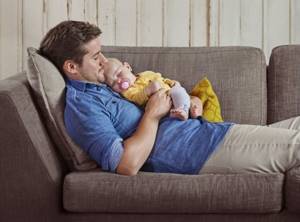
Material
When it comes to choosing which pacifier to choose, the deciding factor will be the material. Since 1999, the use of phthalates and bisphenol has been prohibited in production, so all pacifiers are safe. To find out which material your child will like, you can try all the options offered by manufacturers:
• Silicone. This is the most popular material, it is easy to clean and practically does not absorb odors. Conveniently, silicone products can be washed in the dishwasher.
• Latex. Latex nipples are softer and more flexible than silicone ones. But because of this softness, they wear out faster and are most often not suitable for washing in the dishwasher. Also, children are allergic to latex, then this material will have to be abandoned.
• Rubber. Soft natural rubber is pleasant to the taste and does not rub around the baby's mouth. Excellent replacement for latex!
• Plastic. Durable and easy to clean, but children rarely prefer plastic pacifiers because of their hardness.
Particularly cautious mothers when deciding which pacifier to choose pay attention to solid products made from a molded piece of plastic, silicone, latex, rubber or combinations thereof. The big advantage is that they will not fall apart into small pieces during use.
Form
The next stage of choosing a pacifier is based on shape. Here, too, it all depends on individual preferences, but it’s easier to decide, because there are only two main types:
• Round. They look like a small ball (either perfectly round, like a cherry, or slightly elongated, like a mango) on a stem.
• Orthodontic. They are flat on the bottom and rounded on the top to ensure a proper fit on the baby's tongue and palate. The orthopedic anatomical shape is considered more favorable for the formation of a correct bite than the traditional round one. But even such nipples are best left for newborns, and after two years, forget about them.
When choosing which pacifier is best for a newborn, be sure to pay attention: a pacifier of any shape must have a mouthpiece that prevents it from being pulled completely into the mouth. Designs may vary; sometimes a curved shape is more convenient, as it fits more tightly to the mouth. But any mouthpiece must have ventilation holes to prevent irritation from accumulated moisture.
Size
Size ranges may vary between brands. As a rule, the following division works:
• for infants up to 2 months;
• from 0 to 6 months;
• from 6 months to 1-1.5 years.
Check the label for the recommended age before choosing a pacifier. A particular product is best suited precisely for those ages that the manufacturer has provided.
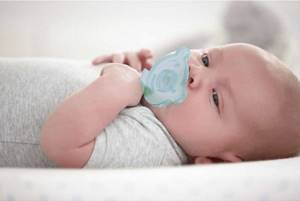
Unusual types of pacifiers
For those for whom design or interesting functions are as important as practicality, they produce unusual baby pacifiers:
• With voluminous decor. Calm your baby down and entertain yourself with a funny baby look by giving him, for example, a pacifier with a mustache or sponges. It can be made part of an outfit for a holiday or a memorable photo shoot.
• Glow in the dark is convenient for quickly finding them in the crib without turning on the light. They emit a soft glow and can be an excellent replacement for a night light.
• Antibacterial LED. Will be needed for children who suffer from mild ARVI. LEDs with a blue light spectrum have a bactericidal effect and alleviate the course of the disease. The manufacturer also recommends using a baby pacifier during teething to relieve symptoms.
Popular brands
Many mothers, before choosing a pacifier, study the range of certain brands. This is a justified approach, because large manufacturers value their reputation and present the most successful developments. We present to you our own ranking of the best of the best.
Philips Avent
Philips Avent, beloved by millions of mothers, rightfully tops our list. This brand has a very wide range of pacifiers for babies of all ages, and it will be very difficult to choose which pacifier is best.
For example, the all-silicone Soothie series. These are soft molded nipples in the shape of funny bear faces. Soothie is very convenient as a teether, and you can put your finger into the mouthpiece.
Ultra Soft series pacifiers feature an innovative flexible mouthpiece with patented FlexiFit technology to prevent pressure and irritation on baby's delicate skin.
The velvety silicone Ultra Air Design teats feature four oversized holes in a lightweight nipple to allow air flow and prevent skin irritation. Multi-colored, with funny designs, they are suitable for children from birth to 1.5 years.
Happy Baby
Latex and silicone, round or orthodontic, available in a variety of original designs. Happy Baby creates its pacifiers taking into account the natural structure and development of the baby's palate, teeth and gums.
Mothercare
Mothercare's own brand produces comfortable and bright silicone nipples that perfectly stimulate the development and strengthening of the baby's oral cavity. For added comfort, it comes with an easy-to-grip handle and a case that protects it from getting dirty. You can choose glow-in-the-dark or classic ones.
Choosing a pacifier is a very personal process that requires time, patience and a little luck. Some babies will get used to it right away, others will take a while to get used to it, and some babies won't accept the breast replacement at all. We tried to make it as easy as possible for you to choose which pacifier to choose so that the baby and mother are calm and happy.
Cons of using a pacifier
- it is important to use the pacifier as little as possible, using it only in extreme cases;
- take timely care of your products, because keeping a foreign object in the mouth for a long time, and even a dirty one, can lead to early caries;
- Abuse of a pacifier can weaken the sucking reflex, because the baby gets tired of sucking his “sedative”, and he no longer has the strength to use his mother’s breast (if the baby is breastfeeding) or a bottle (if he is artificial);
- When sucking on a pacifier, the baby will definitely swallow air, which, when it enters the digestive system, causes colic.
Perhaps the most important disadvantage of pacifiers is that they are addictive. The baby will not be able to sleep and calm down without a pacifier, and you will need a lot of patience and strength to one day wean your baby off it.
Children on breastfeeding can begin to be weaned from the “bad” habit from 5-6 months; for those who are artificially breastfed, this period may be delayed.
Can a newborn be given a pacifier at night?
Newborn babies have a highly developed sucking reflex. The more pronounced it is, the more difficult it is to calm the baby without a pacifier. Such a child will put everything in his mouth - fingers, a blanket, a diaper. In this case, it is better to give him a pacifier. Having satisfied the need for sucking, the baby will calmly fall asleep.
If your baby sleeps better with a pacifier than without it, you shouldn’t deny him. But you should not abuse this method of calming. It will be better if the pacifier is used only to relax the baby before bed. To
Recommendations
- you need to change nipples in a timely manner, the service life of silicone products is 1 month, and latex ones - 3;
- Boil pacifiers daily for no more than 5 minutes;
- store pacifiers in an airtight case;
- Take spare pacifiers with you on walks, because rinsing with water will not clean a pacifier that has fallen to the ground;
- Do not lick a fallen pacifier under any circumstances, otherwise bacteria from your mouth will move into your baby’s mouth;
- Inspect the pacifier before giving it to your baby; if it has tears, it should not be used.

